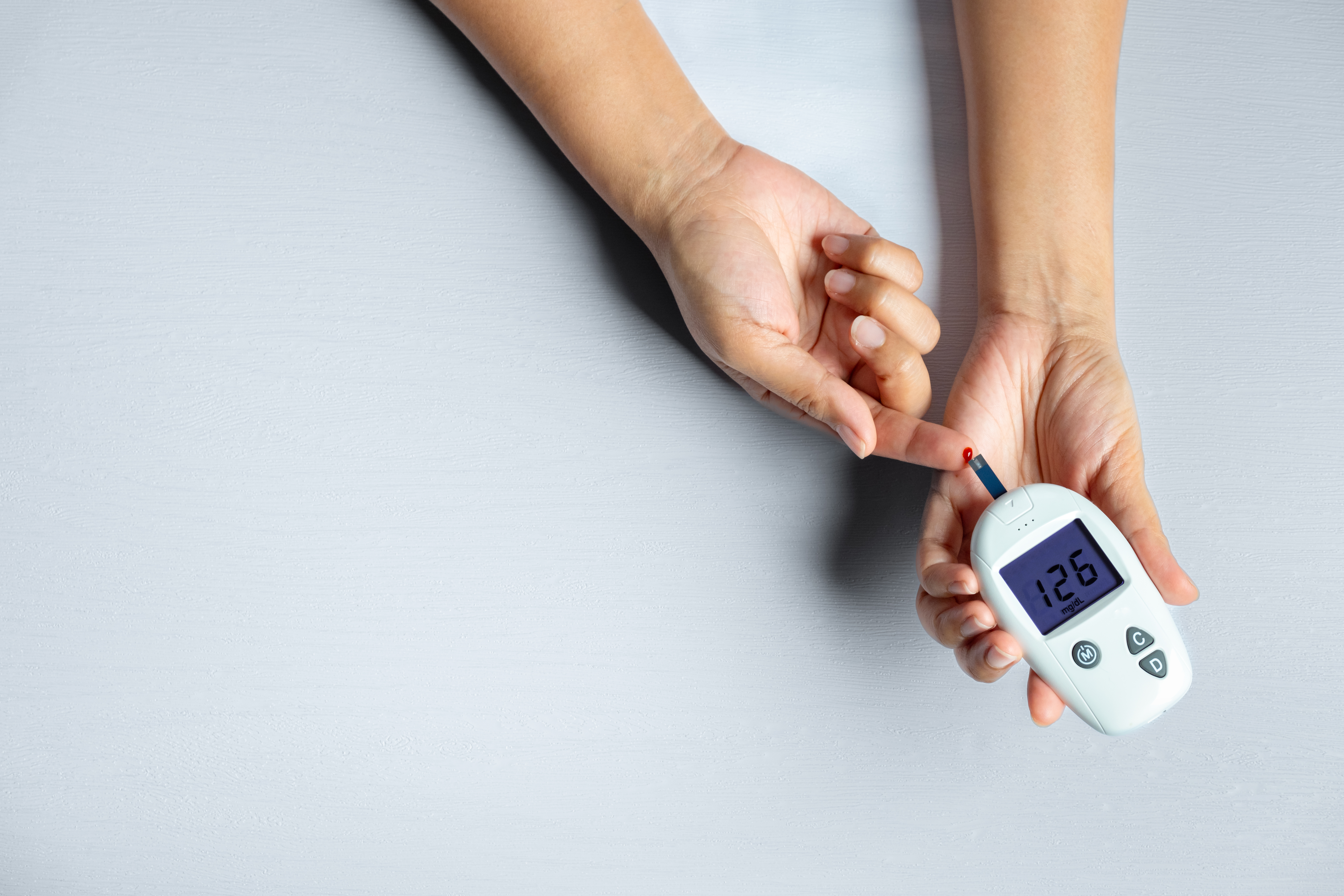If you’ve been diagnosed with pre-diabetes, or you’re at risk for developing type 2 diabetes, you’re not alone.
One in three American adults has pre-diabetes, and most don’t even know it. The good news? You have the power to take control and prevent—or even reverse—this condition through certain lifestyle changes.
Today, we’re diving into how to beat pre-diabetes and reverse type 2 diabetes. It’s possible. You can do it.
Let’s walk through the key steps that can help you improve insulin sensitivity, stabilize blood sugar, and reclaim your health.
What are Pre-Diabetes and Type 2 Diabetes?
Before we jump into solutions, let’s take a second to understand the difference between pre-diabetes and type 2 diabetes:
📌 Pre-diabetes is a condition where your blood sugar levels are higher than normal but not yet high enough to be classified as diabetes. It’s like a warning sign from your body saying, “Hey! We’re floating towards the waterfall!”
📌 Type 2 diabetes occurs when your body becomes resistant to insulin or doesn’t produce enough of it. As a result, blood sugar builds up in your bloodstream, causing problems that affect nearly every organ in your body, from your heart to your kidneys.
The encouraging part: Both conditions are highly preventable and manageable with the right lifestyle changes, especially if you jump on it in the early stages.
Step 1: Follow a Whole-Food Diet
When it comes to beating pre-diabetes and reversing type 2 diabetes, diet is one of the most powerful tools in your arsenal. Your food choices can directly influence your blood sugar levels. So, what should you focus on?
✅ Fiber-Rich Foods: Fiber slows down the absorption of sugar in the bloodstream, helping prevent spikes in blood sugar. Think whole grains (brown rice, quinoa), vegetables, legumes, and fruits like berries.
✅ Healthy Fats: Foods like avocados and nuts can improve insulin sensitivity and reduce inflammation. Omega-3 fatty acids from fatty fish (like salmon) are also great at reducing insulin resistance.
✅ Protein: Lean proteins from sources like chicken, turkey, tofu, and beans are crucial. Protein stabilizes blood sugar and keeps you feeling full longer.
Consider this: Another key aspect is focusing on a low glycemic index (GI) diet. Foods that are low on the GI scale (whole grains, non-starchy vegetables, and legumes) don’t cause rapid spikes in blood sugar, making it easier for your body to maintain stable glucose levels.
Step 2: Get Moving
Exercise is a game-changer for insulin sensitivity. When you’re physically active, your muscles take up glucose for energy, which can lower blood sugar levels. Here’s how to get started:
✅ Strength Training: Building muscle is one of the most effective ways to fight insulin resistance. Your muscles act like glucose sponges, soaking up sugar from the bloodstream. Aim for at least 3 days of strength training each week.
✅ Aerobic Exercise: Walking, jogging, swimming, or cycling for at least 150 minutes a week will help your body better utilize insulin and lower blood sugar levels.
✅ Everyday Movement: Don’t forget the little movements! Try to stay active throughout the day by taking short walks after meals, standing instead of sitting for long periods, or doing stretches.
A simple tip to start is walking after meals—just 10 minutes can make a big difference in blood sugar regulation.
Step 3: Lose Excess Weight
Carrying extra weight, especially around your abdomen, is linked to insulin resistance. But here’s the good news: losing just 5-10% of your body weight can significantly improve insulin sensitivity and help prevent or reverse type 2 diabetes.
✅ Focus on Sustainable Weight Loss: Instead of drastic dieting, aim for steady, sustainable weight loss by pairing healthy eating with regular physical activity.
✅ Prioritize Muscle-Building: Muscle mass helps burn fat and supports healthy blood sugar levels. Strength training combined with a balanced diet will help you lose fat while preserving muscle.
Remember, it’s not about quick fixes. It’s about long-term, healthy habits that promote gradual changes in your body.
Step 4: Manage Stress and Sleep
Did you know that stress and lack of sleep can wreak havoc on your blood sugar? Here’s how:
✅ Chronic Stress: When you’re stressed, your body releases cortisol, a hormone that can raise blood sugar levels. Managing stress through mindfulness, meditation, yoga, or deep breathing can help keep your blood sugar levels in check.
✅ Quality Sleep: Poor sleep can affect insulin sensitivity. Aim for at least 7-8 hours of sleep each night to help your body regulate blood sugar more effectively.
Both of these factors are often overlooked, but they play a huge role in managing pre-diabetes and reversing type 2 diabetes.
Step 5: Try Intermittent Fasting
Intermittent fasting (IF) has gained popularity for its potential to help regulate blood sugar and improve insulin sensitivity. Research shows that IF can lower blood sugar and improve insulin sensitivity.
✅ How It Works: The idea is to cycle between periods of eating and fasting. For example, the 16/8 method involves fasting for 16 hours and eating within an 8-hour window. During fasting, your insulin levels drop, and your body shifts into fat-burning mode.
✅ The Benefits: Intermittent fasting has been shown to lower blood sugar levels, reduce inflammation, and promote weight loss—all of which are important for managing or reversing diabetes.
If you’re considering intermittent fasting, check with your doctor first, especially if you’re on any diabetes medications. Pregnant or breastfeeding women may also find that intermittent fasting isn’t the right lifestyle for their current season.
Step 6: Consider Supplements
While lifestyle changes are your primary focus, certain supplements might support insulin sensitivity and help regulate blood sugar levels. Some of the most researched supplements include:
✅ Cinnamon: Known to improve insulin sensitivity and reduce blood sugar levels.
✅ Magnesium: Low magnesium levels are linked to insulin resistance, so supplementing with magnesium might help improve blood sugar control.
✅ Berberine: This plant extract has shown promising results in improving insulin sensitivity and reducing blood sugar. Learn more about Berberine here.
As always, check with your healthcare provider before starting any new supplements.
Consistency is Key
Reversing pre-diabetes and managing type 2 diabetes is not an overnight process—it takes time and consistent effort. The changes you make today can lead to healthier blood sugar levels and a better quality of life in the future.
So, whether it’s adjusting your diet, incorporating more exercise, managing stress, or using intermittent fasting, the most important thing is to stick with it. Small, sustainable changes over time will make a huge difference.
Your Story Could Sound Like This…
Pre-diabetes and type 2 diabetes don’t have to control your life. With the right changes, you can manage and even reverse these conditions. Focus on a whole-food diet, regular exercise, stress management, and getting enough sleep, and you’ll be well on your way to healthier blood sugar levels.
Remember, it’s all about consistency. The small, sustainable changes you make today will have a profound impact on your future health.
Check out these inspiring stories from real people who have already made these life-changing improvements:
- One of my LEAN participants had their blood sugar drop into the normal range after just 7 weeks of following the program. “I’m the happiest I’ve ever been! I’ve tried different plans over the last 4 years, but everything I learned in LEAN works! Now my blood work is amazing! Insulin was 15.3 in April and now it’s 10.6! I could cry, I’m so thankful for the education and support of LEAN!”
- Another participant was diagnosed with type 2 diabetes and felt overwhelmed. However, after committing to the LEAN lifestyle program, they lost weight and saw their blood sugar levels drop significantly. “LEAN has given me the tools to live a longer and healthier life!!”
These are just a few examples of people who took action, committed to their health, and saw real results. Ready to join them?
Join LEAN today, and let me guide you every step of the way to reverse pre-diabetes, manage type 2 diabetes, and achieve lasting weight loss. Together, we’ll create a customized plan that fits your lifestyle and gets you the results you deserve.
You’ve got the power to transform your health—and it all starts with the first step. Let’s take it together!



